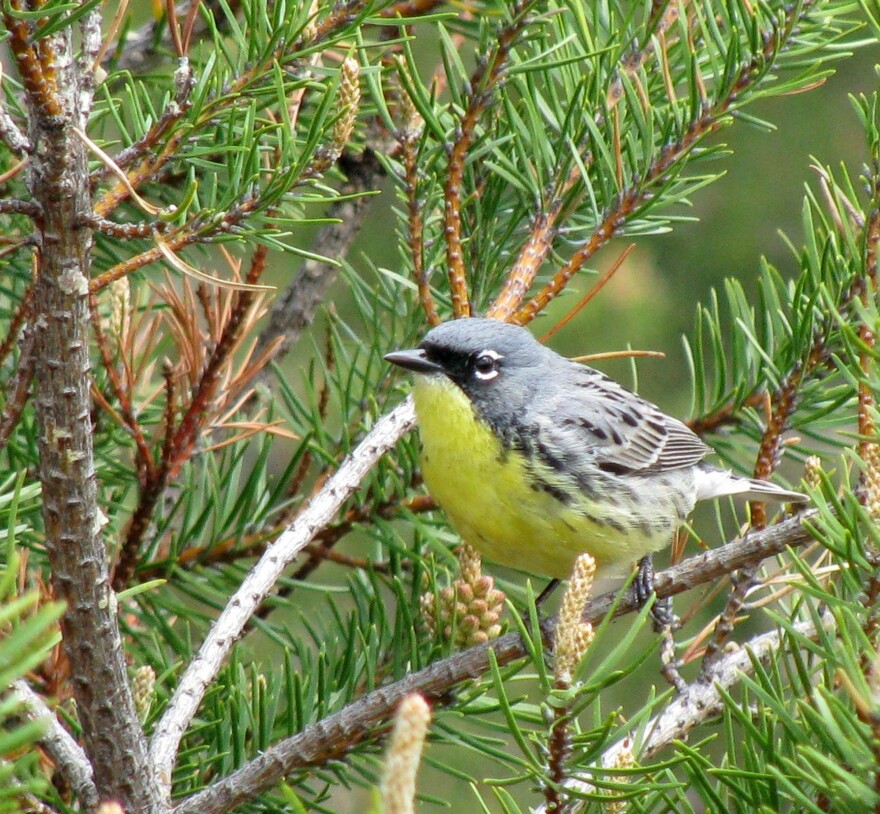According to the U.S. Fish and Wildlife Service, bird watching is one of the fastest growing hobbies in the United States, second only to gardening. In 2011, birders spent $41 billion on trips and equipment, which pumped about $107 billion into the U.S. economy. More than 2,000 of those birders spent time in Michigan.

While the birding industry is growing, the birds we see in Michigan today might not be there tomorrow.
Every morning from late March through the end of May, John Brenneman walks Klienstuck Preserve, doing spring bird surveys for the Kalamazoo Nature Center. He says in the past few years, birds have been spotted in Michigan that haven’t been seen there for decades—like the Blue Grosbeak.
“The last time one was confirmed—outside of last year—was I think 1957, so well over 50 years ago. And then last year also was the year that we had a…there was a King Rail that was in Kalamazoo County which had been almost 30 years since then,” said Brenneman.
While some Southern birds are moving in, native birds might be moving out. Last year the Audubon Society released a report predicting about half the birds in the United States will be threatened by climate change in the future.
Audubon’s Chad Wilsey co-authored that report. He says birds are likely to head north as the climate shifts. That means in five years there could be 13 new species of birds in Michigan and 13 that have moved out of the state. By 2080, Wilsey says we’ll gain 30 species but lose 37, mostly from the Upper Peninsula.
“It’s true for the wood warblers, it’s true for species like the Common Loon, and any other species that inhabit this boreal forest,” said Wilsey.
Unfortunately, the U.P. is where many tourists go to see birds in Michigan. Russ Schipper helps to organize educational programs and field trips for the Kalamazoo chapter of the Audubon Society. He says it's warblers, like the wood warbler, that are especially popular.
“A lot of people travel to the tropics for flashy birds," said Schipper. "A lot of the Europeans—and some of these Europeans are very very serious listers—they like to come to North America because of the warblers. Cause they’re tropical looking, cause they are really flashy, and they just do not have those over there at all.”
David Ewert studies migratory birds for the Nature Conservancy. He says birding festivals are expanding in the state. This means more revenue for small towns during months like May and September when tourism is lower.
“So tourists are brought in that don’t compete with other…with facilities that may already be filled for other reasons at other times of the year. So in that sense it’s a real special boost to the economy by bringing people when they normally aren’t there,” said Ewert.
As popular birds move out of the state, they’ll likely take thousands of tourist dollars with them.
Of course, Ewert says it’s not all that simple. Current breeding birds may move, but there will be a new cast of potentially popular birds.
“I suspect you’re still going to get the migrants coming through. It may be the population of some species will decline, but others may increase,” he said.
But maybe there is a way for some native birds to stay in Michigan. Like Ewert, Kimberly Hall also works for the Nature Conservancy. Her job is to find so-called “climate strongholds” in the Great Lakes—pockets of land that will change the least over time.
Hall says landscapes with more variety will be able to support more species with more food options. Michigan’s lakeshore could be one example.
“Places that are near the Lakes tend to be cooler in the summer, a little bit warmer in the winter, often get a lot more precipitation. So that’s something you can kind of count on as adding a little bit of variety in a system,” she said.
Hall says other climate-safe spaces could be areas near rivers and places with hills and valleys. She says once we know where these strongholds are, we can preserve that habitat to better protect Michigan’s birds.



